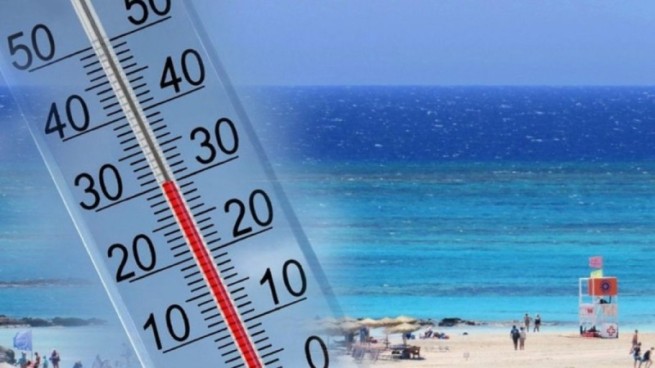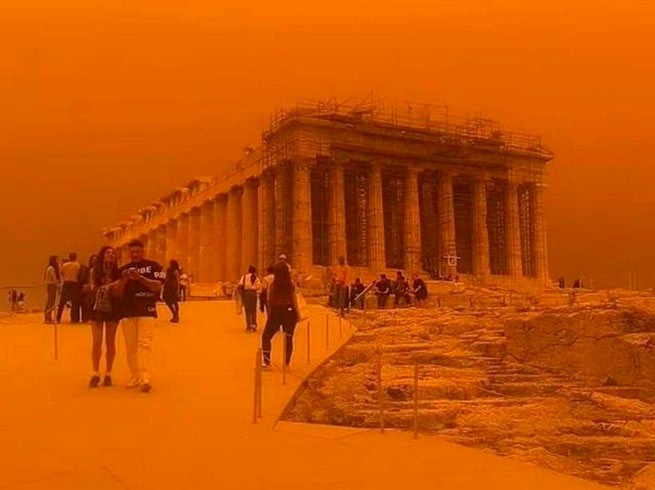What was contained in the Sahara dust that covered Greece this week? The Greek Directorate of Geological and Mining Research (HGMR) carried out a preliminary qualitative analysis, and here are the first results.
Particles aluminum, silicon, calcium, iron and titanium contained in dust that covered Greece for several days, with the peak of this phenomenon occurring in Tuesdaycoloring the skies of Attica and Kalamata from blue to orange and red.
In a post on social media, HGMR said it collected and analyzed Saharan dust particles using a new state-of-the-art JSM-IT500L scanning electron microscope, which is capable of magnifying a dust sample by 300,000 times. The optical size of the dust does not exceed 10 microns, and its chemical composition includes the elements aluminum (Al), silicon (Si) and calcium (Ca) with a minimum content of iron (Fe) and titanium (Ti).
African dust is essentially a “powder” that floats and moves due to winds and its small size. The following photographs show the first results of a qualitative analysis of African dust.
In the 2005 Saharan dust samples, the average composition of dust particles was: 64% silicates, 14% sulfates, 6% quartz, 5% high calcium particles, 1% high iron particles (hematite), 1% carbon black and 9% other high carbon particles (carbonaceous material). 17 different elements were found in these samples, including (but not limited to) sodium (Na), manganese (Mn), aluminum (Al), silicon (Si), iron (Fe), cobalt (Co), copper (Cu) , potassium (K) and calcium (Ca).







More Stories
Weather forecast: air temperature approached +30°C
Flamingos appeared on the beaches of Vouliagmeni and Artemis
A 3.5 meter long shark was spotted in the port of Volos